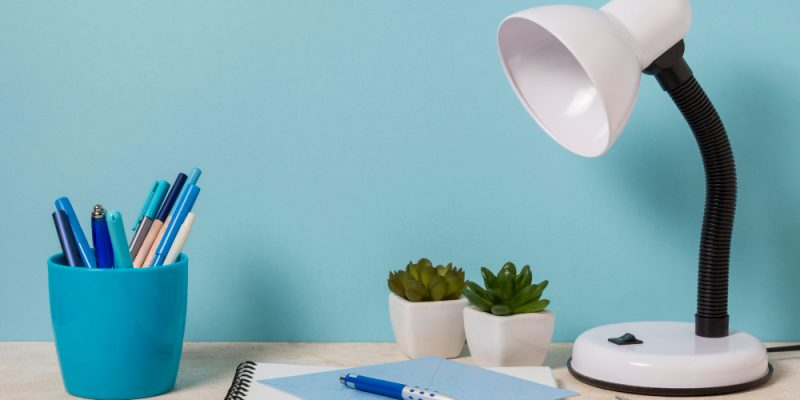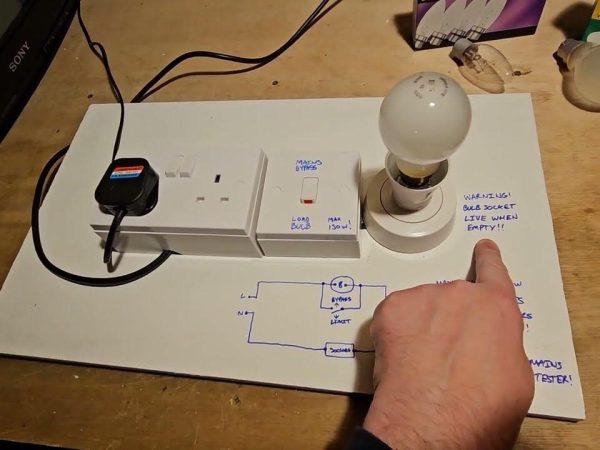Desk Clamp – The Ultimate Guide to Choosing the Right One for Your Setup

Modern workspaces demand flexibility, organization, and efficient use of space. Whether you’re setting up a home office, a gaming station, or a professional workstation, a desk clamp can make a huge difference in comfort and productivity. From holding monitors and lamps to managing cables and microphones, desk clamps provide a secure way to attach essential tools without cluttering your desk surface.
This comprehensive guide will explain everything you need to know about desk clamps — what they are, how they work, the different types available, and how to choose the best one for your specific needs.
What Is a Desk Clamp?
A desk clamp is a mounting device that attaches securely to the edge of a desk or table. It typically uses a tightening mechanism, such as a screw or lever, to hold an object in place without drilling holes or causing permanent damage to the furniture.
Desk clamps are used for a wide range of purposes — mounting computer monitors, lamps, microphones, cameras, and even power strips. They provide stability and save space, making them an essential tool for modern workspaces where every inch counts.
Why Use a Desk Clamp?
A desk clamp offers both practical and ergonomic advantages. Here are a few key reasons to use one:
- Space Saving: By elevating equipment above the desk surface, you free up valuable workspace for writing, typing, or other tasks.
- Stability: Clamps hold items firmly in place, preventing accidental movement or tipping.
- Flexibility: They can be easily repositioned, adjusted, or removed without damage.
- Cable Management: Many clamps include built-in clips or channels to organize cables neatly.
- Aesthetic Appeal: A clean, uncluttered desk not only looks better but also improves focus and productivity.
Whether you’re attaching a monitor arm, microphone, or ring light, a desk clamp makes your setup more organized and professional.
Common Types of Desk Clamps
There are several types of desk clamps, each designed for specific uses. Understanding these will help you select the right one for your setup.
Monitor Clamps: These are the most common type and are used to mount computer monitors. They allow height, tilt, and swivel adjustments for better ergonomics.
Microphone Clamps: Ideal for podcasters, streamers, and musicians, these clamps attach to microphone boom arms, keeping mics secure and easily adjustable.
Lamp Clamps: Desk lamps with clamp bases free up desk space while providing targeted lighting. They’re perfect for offices, studios, or craft tables.
Cable Management Clamps: Small and simple, these help route cables neatly under or along the edge of your desk.
Accessory Clamps: Used for attaching phone holders, camera mounts, or even small shelves. They’re versatile and adaptable to various tools.
Each clamp type serves a unique purpose but shares one common benefit: they help keep your workspace neat and efficient.
Materials and Build Quality
The quality of a desk clamp is largely determined by its material and design. Most high-quality clamps are made of metal, such as aluminum or steel, which ensures durability and strength. Plastic clamps are lighter and more affordable but may not hold heavier equipment securely.
Look for clamps with rubber or silicone padding on the contact points to prevent scratches or dents on your desk. Stainless steel screws and reinforced joints also contribute to long-term performance and stability.
If you plan to mount heavy items like monitors or cameras, investing in a sturdy, all-metal clamp is worth the cost.
How to Choose the Right Desk Clamp
Choosing the perfect desk clamp depends on your workspace needs, equipment, and desk type. Here’s what to consider:
a. Desk Thickness
Measure your desk’s edge to ensure the clamp’s jaw opening is large enough. Most clamps fit desks between one to three inches thick.
b. Weight Capacity
Check the clamp’s weight limit, especially for monitor arms or microphone booms. Overloading can damage both the clamp and your desk.
c. Mounting Style
Some clamps attach vertically to the desk edge, while others mount horizontally or through a grommet hole. Choose one that fits your setup best.
d. Adjustability
For ergonomic comfort, select a clamp that allows height and angle adjustments.
e. Material and Finish
Choose metal for heavy-duty use and plastic for lightweight accessories. A sleek finish also enhances your desk’s look.
f. Compatibility
Ensure the clamp fits the specific equipment or brand you plan to use, as some are designed for universal use while others are product-specific.
By taking these factors into account, you’ll find a desk clamp that fits perfectly into your setup.
How to Install a Desk Clamp
Installing a desk clamp is usually quick and simple. Here’s a basic step-by-step guide:
- Position the clamp: Align it with the edge of your desk where you want your accessory placed.
- Adjust the jaw: Open the clamp wide enough to fit the desk thickness.
- Tighten securely: Turn the screw or lever until the clamp is firmly attached.
- Attach your accessory: Secure your monitor arm, lamp, or microphone to the clamp according to its instructions.
- Check stability: Gently test the connection to ensure everything is steady and balanced.
No drilling or permanent modification is required, making desk clamps ideal for renters or anyone who frequently rearranges their setup.
Maintenance and Care Tips
To extend the life of your desk clamp and ensure safety, follow these maintenance practices:
- Check tightness regularly: Over time, vibrations or movement may loosen the clamp slightly.
- Avoid overtightening: Too much pressure can damage your desk’s surface or the clamp threads.
- Clean surfaces: Dust and debris can reduce grip strength. Wipe down contact points regularly.
- Inspect for wear: Check the rubber pads and screws periodically and replace them if they show signs of damage.
- Store properly: If you remove the clamp, store it in a dry, cool place to prevent rust or corrosion.
Regular maintenance keeps your equipment stable and your workspace safe.
Benefits of Using Desk Clamps for Ergonomics
Desk clamps contribute significantly to a more ergonomic workspace. By mounting monitors or lights at eye level, they help reduce neck and shoulder strain. Adjustable clamps also allow users to customize positioning for optimal comfort.
For example, a monitor clamp arm lets you move your screen closer or farther away, tilt it to reduce glare, and adjust the height to match your sitting posture. These small adjustments can make a big difference in your long-term comfort and productivity.
For home offices or remote work setups, ergonomic desk clamps are one of the easiest upgrades you can make.
Common Mistakes to Avoid When Using Desk Clamps
Even though desk clamps are simple to use, certain mistakes can reduce their effectiveness or cause damage. Avoid these common errors:
- Attaching to weak surfaces: Avoid thin or fragile desks that can crack under pressure.
- Overloading the clamp: Always check weight capacity before mounting heavy items.
- Ignoring protective padding: Failing to use rubber pads can lead to scratches or dents.
- Incorrect placement: Position clamps near sturdy desk edges rather than unsupported corners.
- Neglecting adjustments: Recheck tightness after a few days to maintain stability.
By using your clamp correctly, you’ll maximize both its lifespan and performance.
Top Uses for Desk Clamps in Everyday Setups
Desk clamps can be used in countless ways beyond just monitor or lamp mounts. Here are some creative ideas for incorporating them into your daily routine:
- Dual Monitor Setup: Attach two monitor arms for a streamlined workspace.
- Microphone or Camera Mounting: Perfect for content creators, streamers, or video conferencing.
- Lighting Setup: Add clamp-on lights for better visibility while working or crafting.
- Cable Management: Use small clamps to organize charging cords and prevent tangles.
- Workstation Accessories: Attach phone holders, tablet stands, or even small fans for added comfort.
Desk clamps are not just functional; they also help create a workspace that’s both efficient and visually appealing.
Conclusion
A desk clamp is a small investment that delivers big benefits for your workspace. From improving ergonomics to decluttering your desk, it provides versatility, stability, and efficiency. Whether you’re a gamer, designer, content creator, or remote worker, the right desk clamp can enhance your setup and make your daily tasks more enjoyable.
When choosing a desk clamp, focus on build quality, compatibility, and adjustability. With the right selection and proper maintenance, your clamp will serve you reliably for years to come.
So take a closer look at your workspace — with the right desk clamp, you can transform it into a cleaner, more comfortable, and more productive environment.
FAQs
1. What is the maximum desk thickness a clamp can fit?
Most desk clamps fit desks between one to three inches thick, though some models offer wider adjustments. Always check the manufacturer’s specifications.
2. Can desk clamps damage my desk?
Not if used correctly. Choose clamps with protective rubber or silicone pads to prevent scratches and dents.
3. Are desk clamps compatible with all monitor arms?
Most monitor arms use a universal VESA mount and standard clamp design, but always verify compatibility before purchasing.
4. Can I move my clamp to another desk easily?
Yes, one of the biggest advantages of a clamp is portability. You can detach and reinstall it in minutes without tools or permanent fixtures.
5. What should I do if my clamp becomes loose over time?
Simply retighten it using the adjustment screw or lever. For added security, check that your desk surface is clean and free of dust.
Also read: Are Perfect Amino Bars Healthy? Full Nutrition Breakdown and Taste Review











